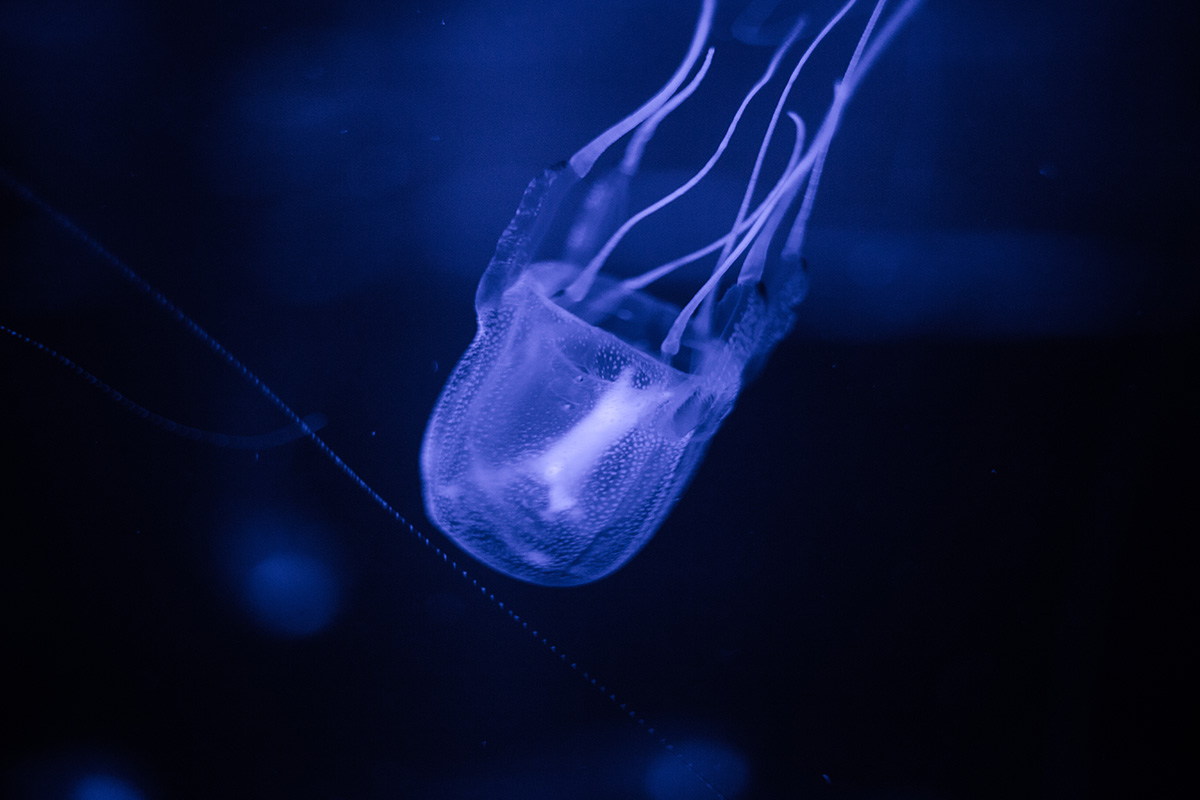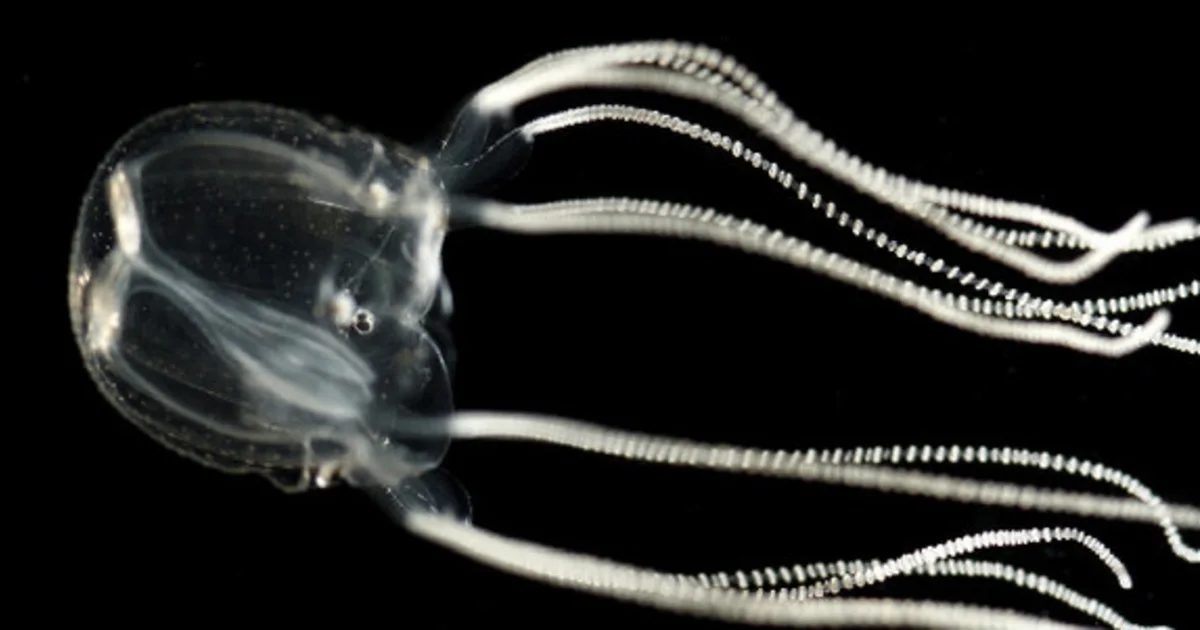Caribbean box jellyfish, which may seem to drift through life without purpose and lack a central brain, have been found to possess the ability to learn rapidly and retain information.
This discovery challenges the long-held belief that associative learning cannot occur without a central nervous system, as highlighted in a study.
The research, led by Anders Garm, an associate professor of marine biology at the University of Copenhagen in Denmark, is part of ongoing studies on jellyfish behavior conducted by the Institute of Physiology at Kiel University in Germany.
“We’ve been looking into visual behavior and all kinds of experiments, and learning is just a natural progression,” said first author Jan Bielecki, a postdoctoral fellow in visual neuroethology at Kiel.
Jellyfish inhabit oceans worldwide, from deep seas to surface waters.
After years of working with the Caribbean box jellyfish, the research team was not shocked to find the animals could learn, but “it was a surprise how fast” they learned, Bielecki said.
Caribbean box jellyfish, also known as Tripedalia cystophora, have 24 eyes — six in each of four visual sensory centers called rhopalia.
The jellyfish’s gelatinous body, called a bell due to its shape, is easily bruised. This vulnerability is a potential disadvantage as the creature navigates mangrove roots in the Caribbean.
Swimming into a root could cause damage, leading to bacterial infections and eventual death, Bielecki noted.
“So we were absolutely certain that these animals were able to learn because (avoiding mangrove roots) is a critical learning process for them if they want to survive,” he said.
To test the animals’ learning ability, researchers lined the inside of a round tank with gray and white stripes.
The gray stripes would appear to the jellyfish’s 24 eyes as dark as distant mangrove roots in their natural habitat. Over 7.5 minutes, researchers observed whether the jellyfish bumped into the stripes or learned to keep a distance.
Initially, the jellyfish swam close to or bumped into the walls. However, within five minutes, their behavior changed.
The jellyfish received a combination of visual stimulation from the stripes and mechanical stimulation from bumping into the obstacles.

“They learned they get these stimuli concurrently (and) avoid the obstacles,” Bielecki said. “They increased performance in all the parameters that we measured for obstacle avoidance.”
The researchers then replaced the stripes with a solid gray field, and the jellyfish bumped into it repeatedly.
“There was no visual cue so they didn’t learn anything,” Bielecki explained. “They just kept bumping into stuff and not responding.”
Finally, the researchers conducted a neurophysiological experiment focused on how the rhopalia send out electric signals that drive the jellyfish’s pulsing motion, or swim contractions, which they use to propel themselves.
The speed of the pulsing increases significantly as they move to avoid an obstacle.
The scientists isolated the rhopalia by detaching them from the bell. While the mangrove root stand-ins were moved around, the jellyfish’s sight mechanism remained still. Could the visual system learn to avoid the gray lines?
The researchers connected a system that could send a weak electric signal to the visual sensory centers. When the rhopalia didn’t naturally activate the signal to stimulate swim contractions, the scientists did it for them.
Soon, the rhopalia began sending the signal without prompting, even for the lighter gray bars that provided less contrast against the rest of the environment.
Bielecki said they achieved their findings because the experiment was “behavior relevant” for the jellyfish. The researchers placed the animals in a situation similar to what they would encounter in the wild.
“So both visual stimulation and mechanical stimulation is something that (occurs) in their natural habitat,” he said. “They know exactly what to do with this.”
Dr. Michael Abrams, a researcher in the department of molecular and cell biology at the University of California, Berkeley, praised the study.
Although he was not involved in the new research, he commented, “The scientists devised a very convincing experimental paradigm to quantify associative learning in this box jellyfish.
Their findings may also be evidence of some amount of short-term memory,” Abrams said in an email. He added that the study clearly demonstrated the jellyfish’s ability to learn, leaving him curious about “how long their memory lasts.”
While completing his doctorate at the California Institute of Technology, Abrams worked on a 2017 study about the upside-down jellyfish (Cassiopea) and its “sleep-like state,” which was “also once considered to be a behavior only existing in animals with a central nervous system.”
